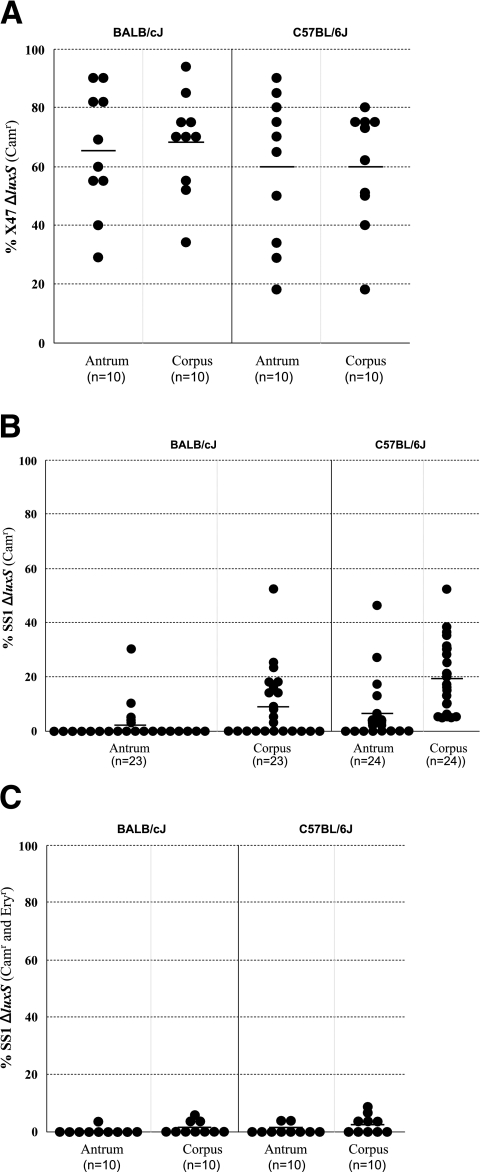FIG. 3.
Competition tests of the importance of a functional luxS gene for mouse colonization. Mice of two different inbred lines (C57BL/6J and BALB/cJ) were inoculated with 1:1 mixtures of isogenic luxSwt and ΔluxS derivative strains (chloramphenicol sensitive and resistant, respectively) shown in Fig. 2. Mice were sacrificed 2 weeks later, antrum and corpus were separated, and H. pylori was recovered from each tissue by colony formation (see Materials and Methods). At least 20 single colonies from each tissue from each mouse were scored as resistant (ΔluxS) or susceptible (luxSwt) to chloramphenicol. Each point represents the ratio of two types from a different mouse. Horizontal lines depict mean ratios. Panel A. Strain X47 derivatives diagrammed in Fig. 2, lines A and B. Panel B. Strain SS1 derivatives diagrammed in Fig. 2, lines A and B. Panel C. Derivatives of the SS1 ΔluxS strain used in panel B that had been transformed with DNA containing a luxSwt allele linked to a downstream erm (resistance) insertion or with DNA containing the original ΔluxS allele linked to this erm cassette at the same site (see Fig. 2, lines C and D).

